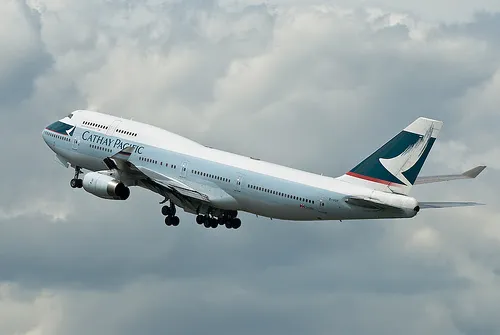
Cathay Pacific Group posts attributable profit of HK$6 billion for 2015
2015 performance was better than 2014.
The Chairman's Letter of the Cathay Pacific Group states that the group has reported an attributable profit of HK$6,000 million for 2015.
According to a document from Cathay Pacific, this compares to a profit of HK$3,150 million in 2014. Earnings per share were HK152.5 cents compared to HK80.1 cents in the previous year.
The Group’s performance in 2015 was better than in 2014. The business benefited from low fuel prices. The high passenger load factors experienced in the first half of the year continued in the second half. This reflected strong economy class demand. Premium class demand was not as strong as expected on some long-haul routes.
Air cargo demand, which came under pressure during the second quarter of the year, remained weak in the second half. There was an improved contribution from the Group’s subsidiary and associated companies.
The Group’s passenger revenue in 2015 was HK$73,047 million, a decrease of 3.5% compared to 2014. Capacity increased by 5.9%, reflecting the introduction of new routes (to Boston, Düsseldorf, Hiroshima and Zurich) and increased frequencies on some other routes. The load factor increased by 2.4 percentage points, to 85.7%.
Strong competition, a significant reduction in fuel surcharges, unfavourable foreign currency movements and the fact that a higher proportion of passengers were connecting through Hong Kong put downward pressure on yield, which decreased by 11.4%, to HK59.6 cents. Economy class demand was strong. Premium class demand improved on regional routes but was not as strong as expected on some long-haul routes.
Here's more from Cathay Pacific:
The Group’s cargo revenue in 2015 was HK$23,122 million, a decrease of 9.0% compared to the previous year. This mainly reflected a reduction in fuel surcharges consequent upon lower fuel prices. Capacity for Cathay Pacific and Dragonair increased by 5.4%. The load factor decreased by 0.1 percentage point to 64.2%.
Strong competition, overcapacity, unfavourable foreign currency movements and the reduction in fuel surcharges put pressure on yield, which decreased by 13.2%, to HK$1.90. Demand was strong in the first quarter of 2015, assisted by industrial action at ports on the west coast of the United States. Overall demand was weak for the rest of the year, particularly on European routes.
Total fuel costs for Cathay Pacific and Dragonair (before the effect of fuel hedging) decreased by HK$14,561 million (or 37.8%) compared to 2014, despite increases in capacity. A 40.3% decrease in average prices was partially offset by a 4.3% increase in consumption. Fuel is still the Group’s most significant cost, accounting for 34.0% of our total operating costs in 2015 (compared to 39.2% in 2014).
Fuel hedging losses reduced the benefit of lower fuel costs. After taking hedging losses into account, fuel costs decreased by HK$7,331 million (or 18.2%) compared to 2014.
We continue to invest heavily in our products and brands. Cathay Pacific’s new livery was introduced inNovember 2015. Except for Boeing 747-400 and Airbus A340-300 passenger aircraft that are being retired, all Cathay Pacific and Dragonair wide-bodied passenger aircraft have been fitted or refitted with new or refreshed seats in all classes. Our new Airbus A350XWB aircraft will have new cabins, seats and entertainment systems.
The first class lounge at The Pier at Hong Kong International Airport reopened in June 2015. We opened lounges in Manila in May, Bangkok in June, San Francisco in October and Taipei in November 2015.
The operating environment was better in 2015 than in 2014, but we faced some significant challenges, which we expect to continue in 2016. Strong competition from other airlines in the region, foreign currency movements and weak premium class passenger demand will put pressure on passenger yield.
Cargo demand will be adversely affected by industry overcapacity. Overall passenger demand remains strong and we expect to continue to benefit from low fuel prices. Our subsidiaries and associates are expected to continue to perform well.
We are confident of longer-term success, and we will continue to help our passengers to travel well. In January 2016, we announced that Dragonair is to be rebranded as Cathay Dragon, as part of an effort to create a more consistent travel experience between the two airlines.
We will continue to invest in aircraft, in our products and in the development of our network. Our financial position is strong. Supported by our world-class team, we remain deeply committed to strengthening the aviation hub in Hong Kong, our home city for the past 70 years.








![Cross Domain [Manu + SBR + ABF + ABR + FMCG + HBR + ]](https://cmg-qa.s3.ap-southeast-1.amazonaws.com/s3fs-public/styles/exclusive_featured_article/public/2025-01/earth-3537401_1920_4.jpg.webp?itok=WaRpTJwE)









 Advertise
Advertise


